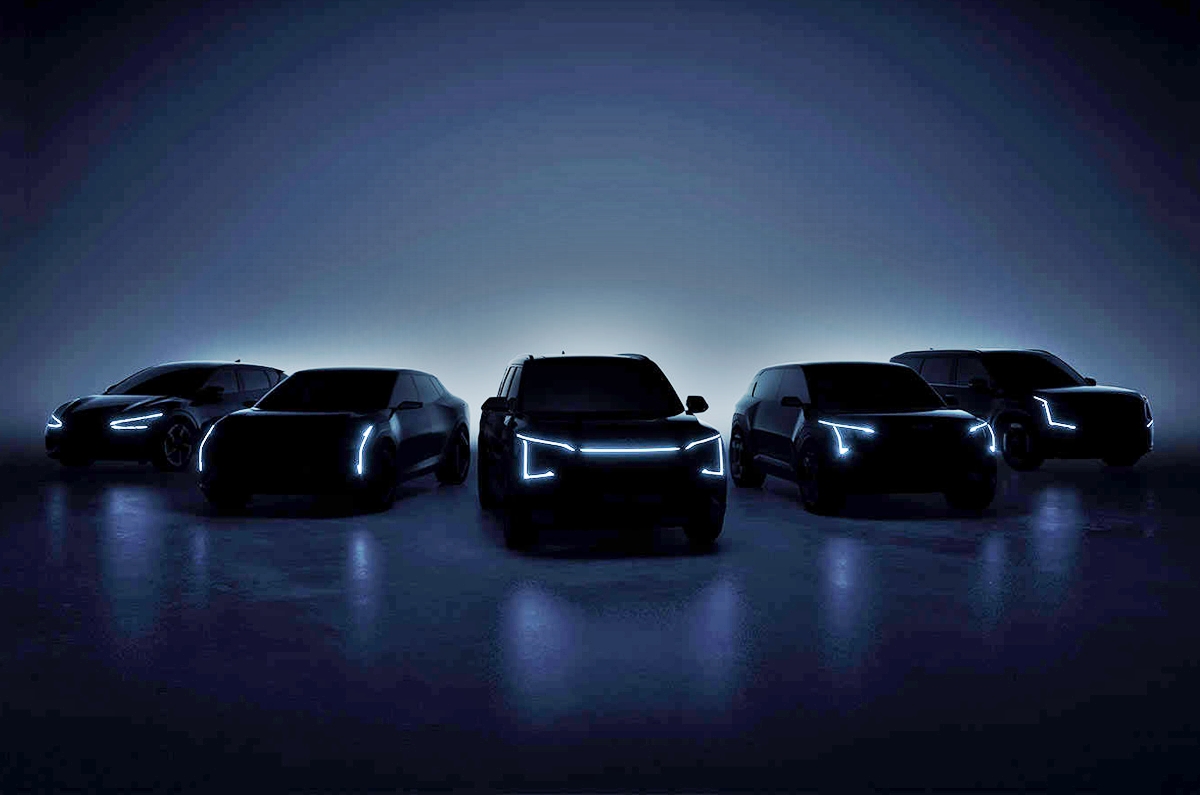Two of these already exist globally, while more details on the rest are expected at the upcoming Kia EV day.
Kia has trademarked as many as eight new electric vehicles in India – the range starts with the EV1, goes all the way up to the EV9. The EV9 is Kia’s flagship electric model, and we already know its slated to arrive in India sometime next year, but while there’s no confirmation on the others, trademarking the names suggests that Kia could have its entire born EV portfolio in India in the future.
- Kia has trademarked EV1 to EV9 born EVs in India
- EV6 is already on sale in India
Kia’s future EVs: what do we know so far?
The nomenclature of the models suggests their size and positioning relative to each other with the EV1 sitting at the base of the range while the EV9 serves as the flagship.
Of these, the EV6 crossover is already on sale here, and the EV5 debuted in production form just a couple of months earlier. The 4.6-meter-long SUV will be offered for sale only in the China initially, but will also make it to select global markets eventually. Crucially, the trademarking comes just before Kia’s EV day on October 12, which is when we can expect more details on the remaining models.
Recently, in markets abroad, a Seltos-sized upright SUV was spotted testing that will likely be called the EV4 upon debut. It will measure about 4.2 meters in length and it is this model that we are expecting more details on at the upcoming Kia EV day.
A teaser for the event also shows the silhouette of an EV6-like coupe-crossover with distinctive LED lighting elements, although it’s not known what its size will be relative to the EV6.
There are, however, no details on the body style or size of the remaining four vehicles, neither is it known which of these will be brough to India. Expect more details to be revealed at the upcoming Kia EV day 2023.
Also See:
Kia Carens X-Line launched at Rs 18.94 lakh; gets rear entertainment screen
India-bound Kia Carnival facelift global debut soon
Kia to expand India plant capacity to 4.3 lakh units by mid-2024

